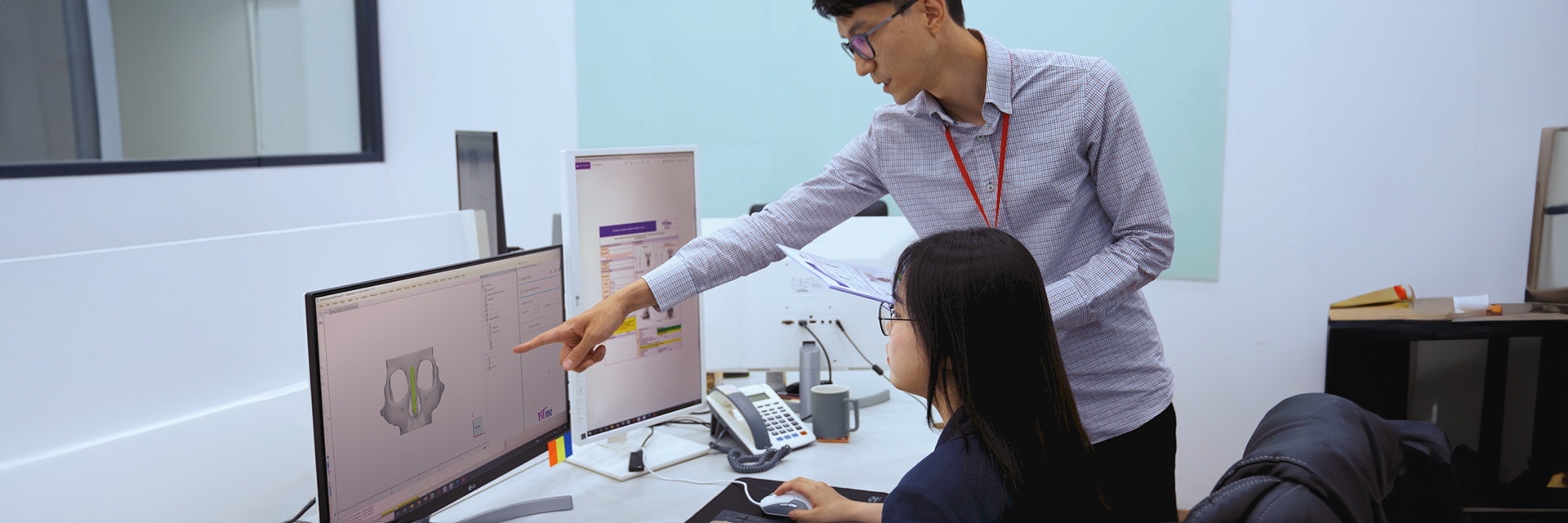CASE STUDY
Personalized Automation: How FITme Increased Productivity by 346%
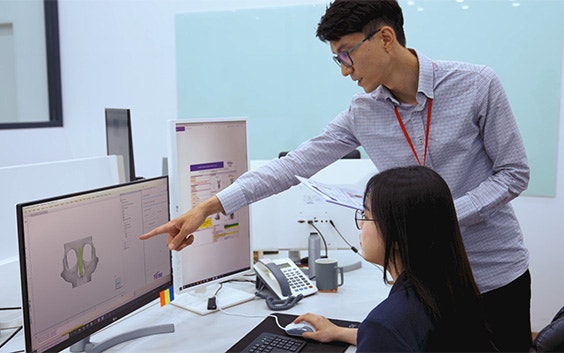
As the world moves towards personalization for things as simple as musical tastes, why not personalize medical care? After all, every person’s anatomy is unique. Medical devices that are personalized can better account for the different anatomies and help with improved patient care. However, the issue at hand is how companies can scale up their processes so that mass personalization can become a reality.
Cosmetic facial surgery is a challenging field. It aims to reach symmetry while maintaining craniofacial functions. So, it was not long until the cosmetic medical community widely adopted 3D-printed parts that provide tactile feedback and a superior appreciation of the visuospatial relationship between anatomical structures. In addition, 3D printing has offered the means to improve and optimize preoperative planning, develop intraoperative guidance tools, reduce operative time, and significantly improve the biofunctional and aesthetic outcome.
Now, FITme, a Korean-based company specialized in manufacturing implants for facial reconstruction, has taken 3D printing one step further. They decided to bring together nasal silicone implants and mass personalization to provide better fitting implants and faster service to their patients. With the help of Materialise's custom plugin development and the Mimics platform, FITme is working to improve their production processes with mass personalization through 3D technology.
Challenge
Reducing manual effort and time spent designing implants
From the beginning, FITme did not want to utilize conventional silicone implants. “The process of fitting a ready-made silicone implant onto a bone structure with manual carving is typically very time-consuming. Another issue is that surgeons have no tool to analyze patients' scan data; they rely on photographs alone," explains William Jung, Product and Project Manager at FITme. A conventional implant can lead to side effects such as bending and movement, which inevitably leads to patient dissatisfaction.
Additionally, "Medical tourism industry in Korea has been rapidly rising over the past two decades. As a result, we had higher demands and needed to find a solution to reduce the lead time," adds William.
Their challenge in creating custom nasal implants was that the "sketching" steps of designing the nasal implants that conform to the irregular, variable shape of patient nasal profiles could be a daunting and repetitive task, even for skilled design engineers. Another big hurdle was that it would take up to three months for new engineers to be adequately trained in designing patient implants; furthermore, training new engineers was expensive.
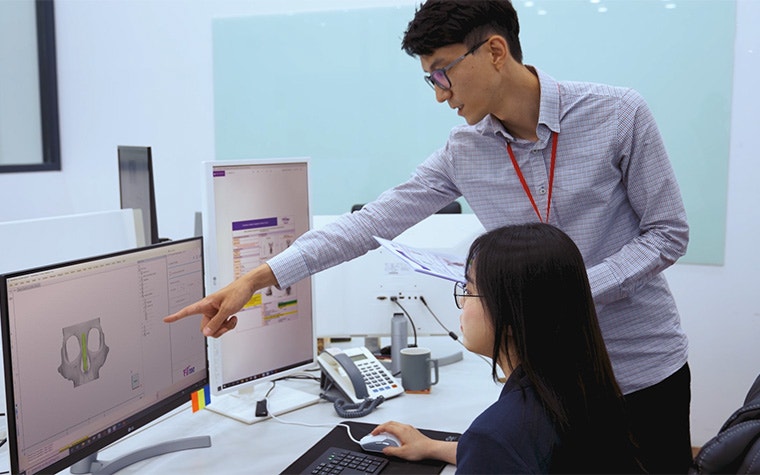

Solution
Enabling design within a fraction of the time
Materialise's experts analyzed and studied the workflow that FITme developed in 3-matic* to construct a personalized solution — a custom plugin that automates the workflow yet retains key manual design steps for the design engineer to perform.
The plugin, named FITme Nasal Implant Wizard, streamlines the design process. After the design engineer prepares the segmented parts of the patient, the custom plugin imports the segmented parts (midface, cartilage, skull, and airway) as 3D models into 3-matic, whereby the parts will be merged and warped into a single object. The plugin then starts to set the sketches by automatically creating the base and center sketch plane based on the engineer's landmark indication. The sketches then auto-align to the midface. The engineer still has the flexibility to adjust the sketch planes with the interactive translate/rotate function.
Once the engineer completes the sketch, the plugin superimposes the sketch to the nasal structure and creates the base profile of the nasal implants. By indicating the number of profiles to be constructed along the contour of the nasal structure, the plugin automatically creates the profile of the implant with a single click. It perfectly conforms to the unique shape of each patient's nasal bone and cartilage structure.
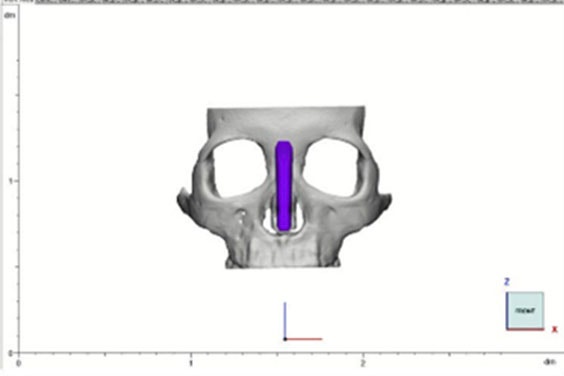

“With the custom plugin, we have increased our productivity by 346% in the design phase, plus now we have more consistent designs than before, all thanks to automation.”
— William Jung, Product and Project Manager, FITme
Result
Scaling up personalized device design with workflow automation
Finally, mass customization is tangible with this plugin. By using it, the FITme team can scale up its work from one custom design to 10, 20, or even hundreds of designs while still maintaining the option to customize every individual design when needed.
"With the custom plugin, we have increased our productivity by 346% in the design phase, plus now we have more consistent designs than before, all thanks to automation," mentions William.
He also explains that before using the plugin, it would take one hour to complete an implant design. Plus, it had to be done by a three-year-experienced engineer. Now, it only takes 15 minutes to finish a patient-specific nasal implant design.
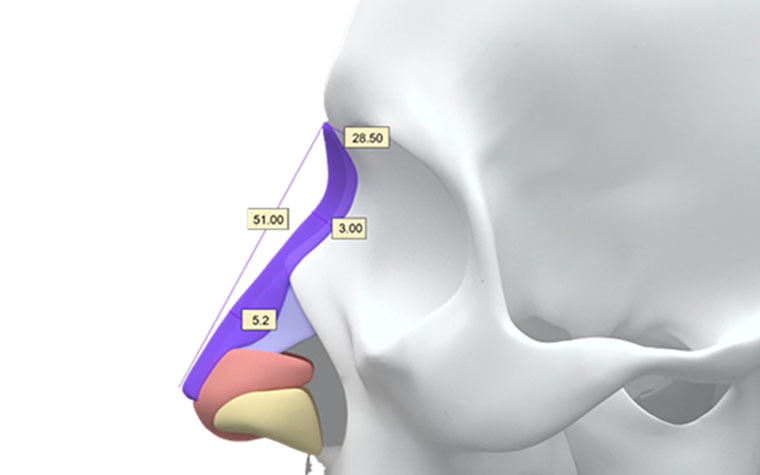

Ultimately, by using the custom plugin, FITme is not only saving time but also saving money. According to William, the company saves $10,000 per new engineer by reducing training time from three months to less than a day since the learning curve is largely reduced with the custom plugin.
William adds, "Materialise's custom plugin goes hand-in-hand with our three core focuses: 3D printing, engineers, and being pioneers. Since we adopted the use of the plugin, the number of cases has rapidly increased, and now we have more than 130 partner hospitals in six different countries."
Ⅰ From FITme:
- The productivity rate was derived from the time saved in the design phase with the custom plugin.
- Out of the 20 cases analyzed, the average working time with two R&D engineers from design to creating the final nasal customized implant without custom plugin is 52 minutes. The operation time was reduced to 15 minutes with custom plugin. Hence, 346 +/- 5% (deviation) productivity rate improvement was calculated based on time saved.
- Note: If only the working time with 3-matic in the design phase is considered, the operation with the custom plugin only takes 1 – 2 minutes versus manually at 13 – 15 minutes, which is tremendous time-savings.
Ⅱ From FITme:
- 8 hrs/day x 20 days/month (working hours per month) x 25,000 KRW/hr (cost per man hour for an engineer) x 3 months (time saving on engineer’s training with custom plugin) = 12 mil KRW (equivalent to $10,000 USD).
Materialise medical device software may not be available in all markets because product availability is subject to the regulatory and/ or medical practices in individual markets. In countries where no regulatory registration is obtained of Mimics and/or 3-matic Medical, a research version is available. Please contact your Materialise representative if you have questions about the availability of Materialise medical device software in your area.
L-102310-01
以下で共有する:
上記CASE STUDYについて
Plastic surgery
Materialise Mimics
Custom plugin
Personalized nasal silicone implants
Reduce lead time spent on the design of each nasal implant
Automate repetitive steps in workflow while still allowing design flexibility
